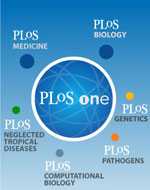Mol. Pharm.:酒精能够强化一些药物在体内的影响
2012-07-30 ZinFingerNase 生物谷
除了可能的肝损伤、胃出血和其他副作用之外,科学家们报道了另一种服用某些药物时应当避免喝酒的另一种原因。在一项发表在Molecular Pharmaceutics期刊上的新研究中,研究人员描述了实验室实验:酒精能够让身体实际获得的一些药物的数量增加高达3倍或更多。 Christel Bergstr?m和同事们解释到,在服用特定剂量之后,饮料酒精或者说乙醇导致身体能够获得的非处方药和处方药数量增加。
除了可能的肝损伤、胃出血和其他副作用之外,科学家们报道了另一种服用某些药物时应当避免喝酒的另一种原因。在一项发表在Molecular Pharmaceutics期刊上的新研究中,研究人员描述了实验室实验:酒精能够让身体实际获得的一些药物的数量增加高达3倍或更多。
Christel Bergström和同事们解释到,在服用特定剂量之后,饮料酒精或者说乙醇导致身体能够获得的非处方药和处方药数量增加。酒精能够改变体内酶和其他物质如何与市场上5000种药物中很多种相互作用。这些药物中的一些不能很好地在胃肠道中溶解,特别是在胃部和肠道。研究人员想测试乙醇如何让这些药物更加容易地溶解。如果能够的话,这将让身体更多地获得这些药物,因此这些药物与酒精一起服用可能强化它们的效果。
为此,研究人员利用一种模拟的小肠环境来测试酒精存在或不存在时,药物如何快速地溶解。在他们的测试总,22种药物当中将近60%在酒精存在时更加快速地溶解。此外,他们发现某些物质,比如一些酸性物质,更容易受到酒精的影响。一些常见的酸性药物包括抗凝血剂华法林(warfarin);用来治疗某些类型癌症的三苯氧胺(Tamoxifen);缓解疼痛和炎症的萘普生(naproxen, 也译作甲氧萘丙酸)。
本文编译自Alcohol could intensify the effects of some drugs in the body

doi: 10.1021/mp2006467
PMC:
PMID:
Ethanol Effects on Apparent Solubility of Poorly Soluble Drugs in Simulated Intestinal Fluid
Jonas H. Fagerberg†, Yassir Al-Tikriti†, Gert Ragnarsson‡, and Christel A.S. Bergström
Ethanol intake can lead to an unexpected and possibly problematic increase in the bioavailability of druglike compounds. In this work we investigated the effect of ethanol on the apparent solubility and dissolution rate of poorly soluble compounds in simulated intestinal fluid representing a preprandial state. A series of 22 structurally diverse, poorly soluble compounds were measured for apparent solubility and intrinsic dissolution rate (37 °C) in phosphate buffer pH 6.5 (PhB6.5) and fasted state simulated intestinal fluid (FaSSIF, pH 6.5) with and without ethanol at 5% v/v or 20% v/v. The obtained data were used to understand for which molecules ethanol results in an increased apparent solubility and, therefore, may increase the amount of drug absorbed. In FaSSIF20%ethanol 59% of the compounds displayed >3-fold higher apparent solubility than in pure FaSSIF, whereas the effects of 5% ethanol on solubility, in most cases, were negligible. Acidic and neutral compounds were more solubilized by the addition of ethanol than by lecithin/taurocholate aggregates, whereas bases showed a more substance-specific response to the additives in the buffer. The stronger solubilizing capacity of ethanol as compared to the mixed lipid aggregates in FaSSIF was further identified through Spearman rank analyses, which showed a stronger relationship between FaSSIF20%ethanol and PhB6.5,20%ethanol (rS of 0.97) than FaSSIF20%ethanol and FaSSIF (rS of 0.86). No relationships were found between solubility changes in media containing ethanol and single physicochemical properties, but multivariate data analysis showed that inclusion of ethanol significantly reduced the negative effect of compound lipophilicity on solubility. For this data set the higher concentration of ethanol gave a dose number (Do) <1 for 30% of the compounds that showed incomplete dissolution in FaSSIF. Significant differences were shown in the melting point, lipophilicity, and dose profiles between the compounds having a Do < 1 and Do > 1, with the latter having higher absolute values in all three parameters. In conclusion, this study showed that significant effects of ethanol on apparent solubility in the preprandial state can be expected for lipophilic compounds. The results herein indicate that acidic and neutral compounds are more sensitive to the addition of ethanol than to the mixed lipid aggregates present in the fasted intestine.
本网站所有内容来源注明为“梅斯医学”或“MedSci原创”的文字、图片和音视频资料,版权均属于梅斯医学所有。非经授权,任何媒体、网站或个人不得转载,授权转载时须注明来源为“梅斯医学”。其它来源的文章系转载文章,或“梅斯号”自媒体发布的文章,仅系出于传递更多信息之目的,本站仅负责审核内容合规,其内容不代表本站立场,本站不负责内容的准确性和版权。如果存在侵权、或不希望被转载的媒体或个人可与我们联系,我们将立即进行删除处理。
在此留言










#Pharm#
28